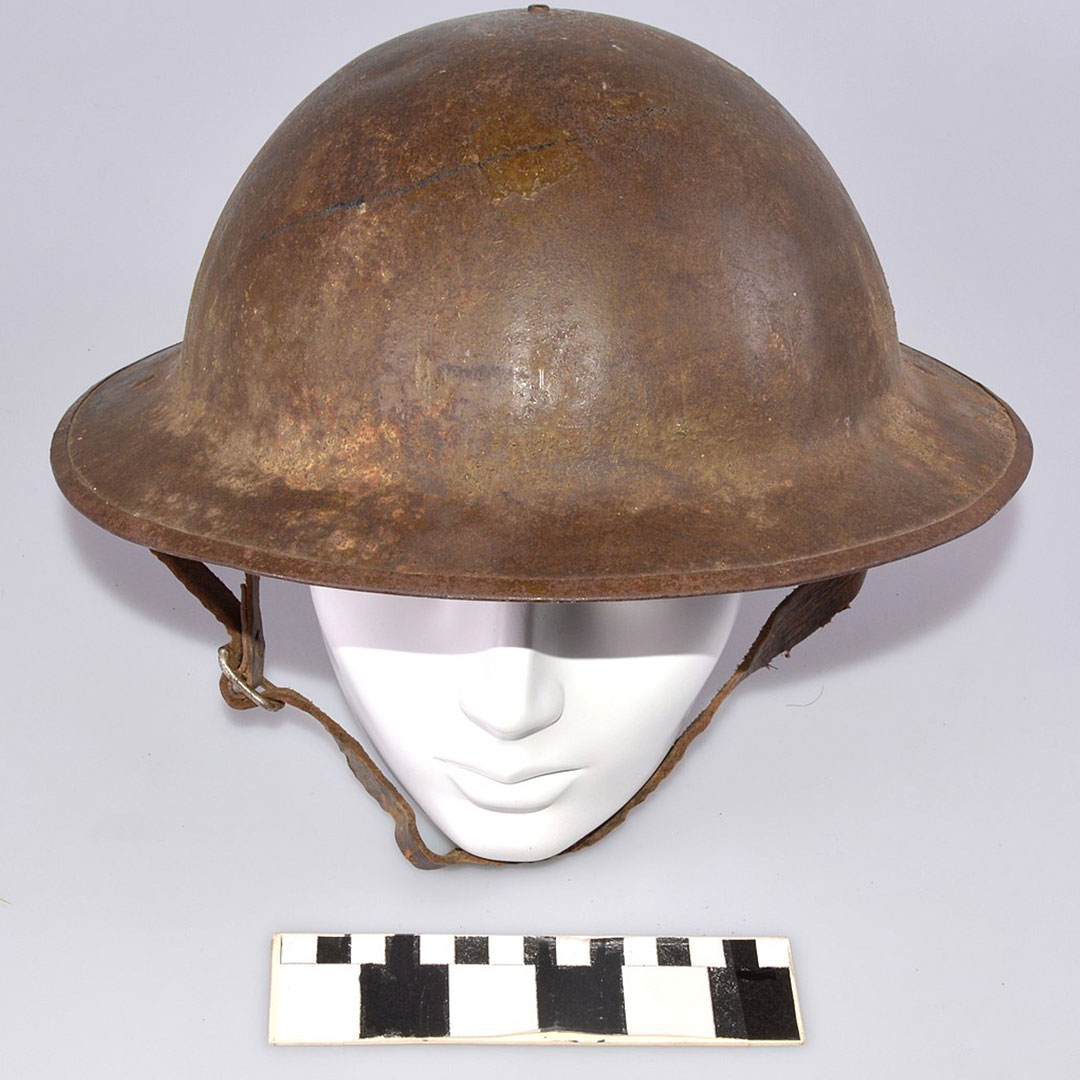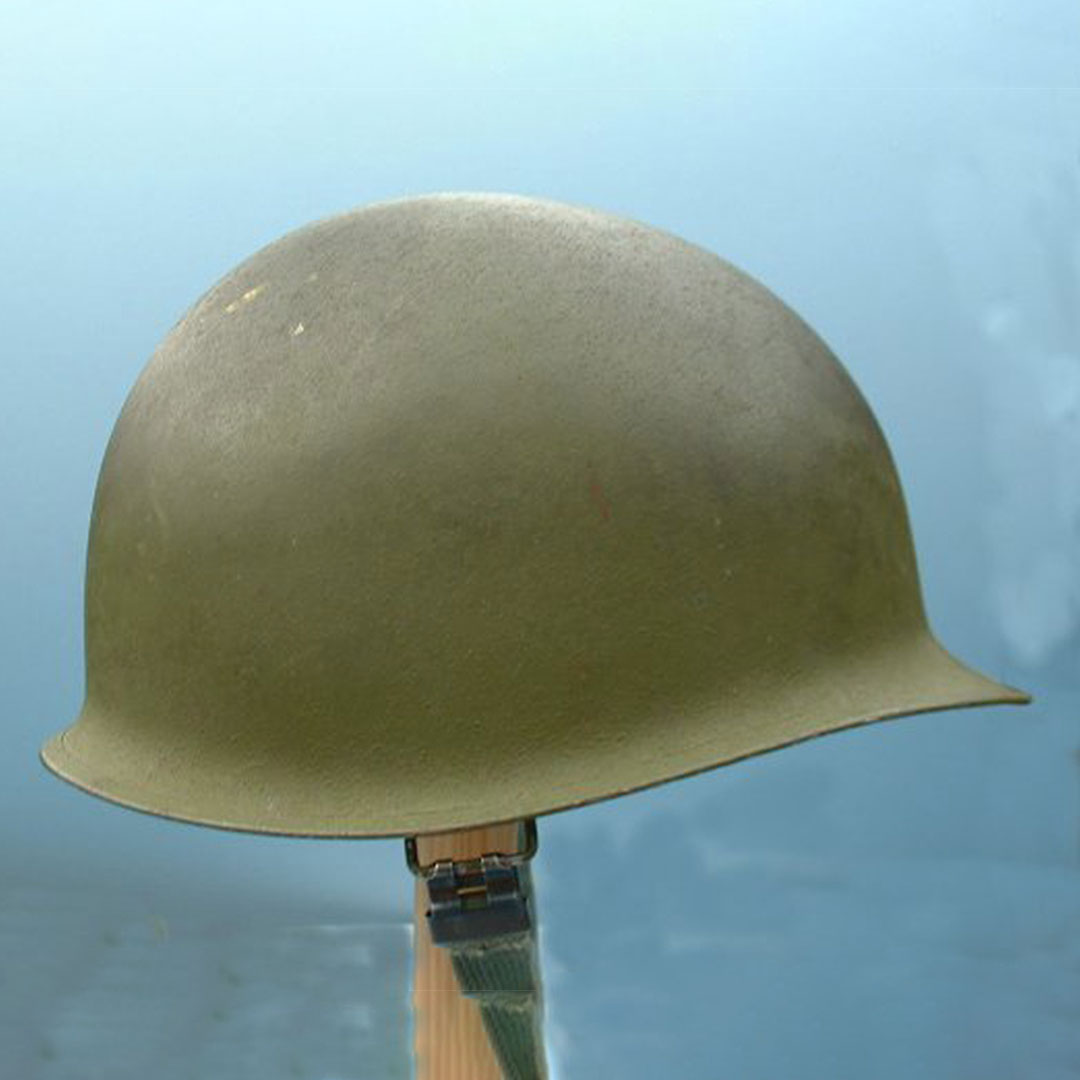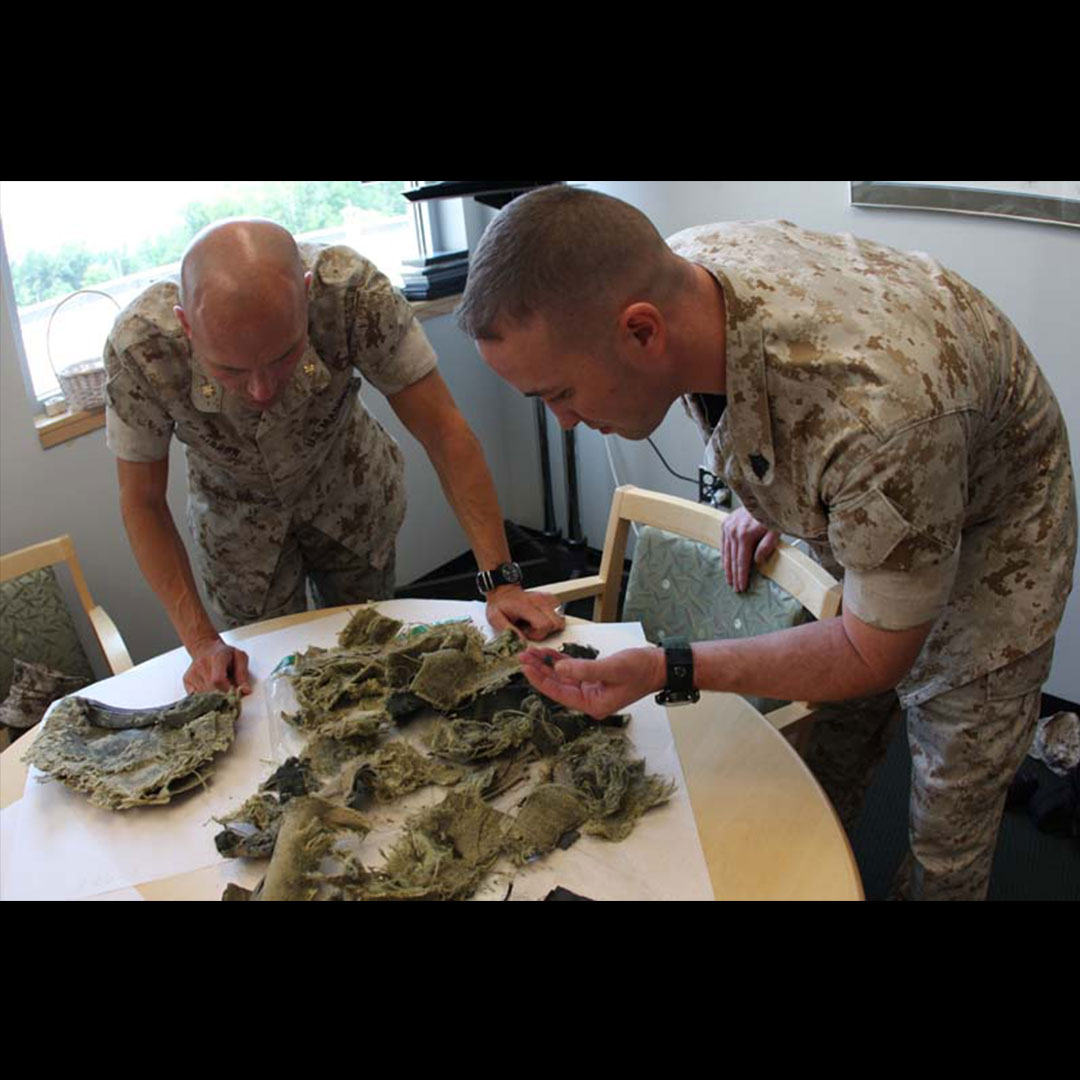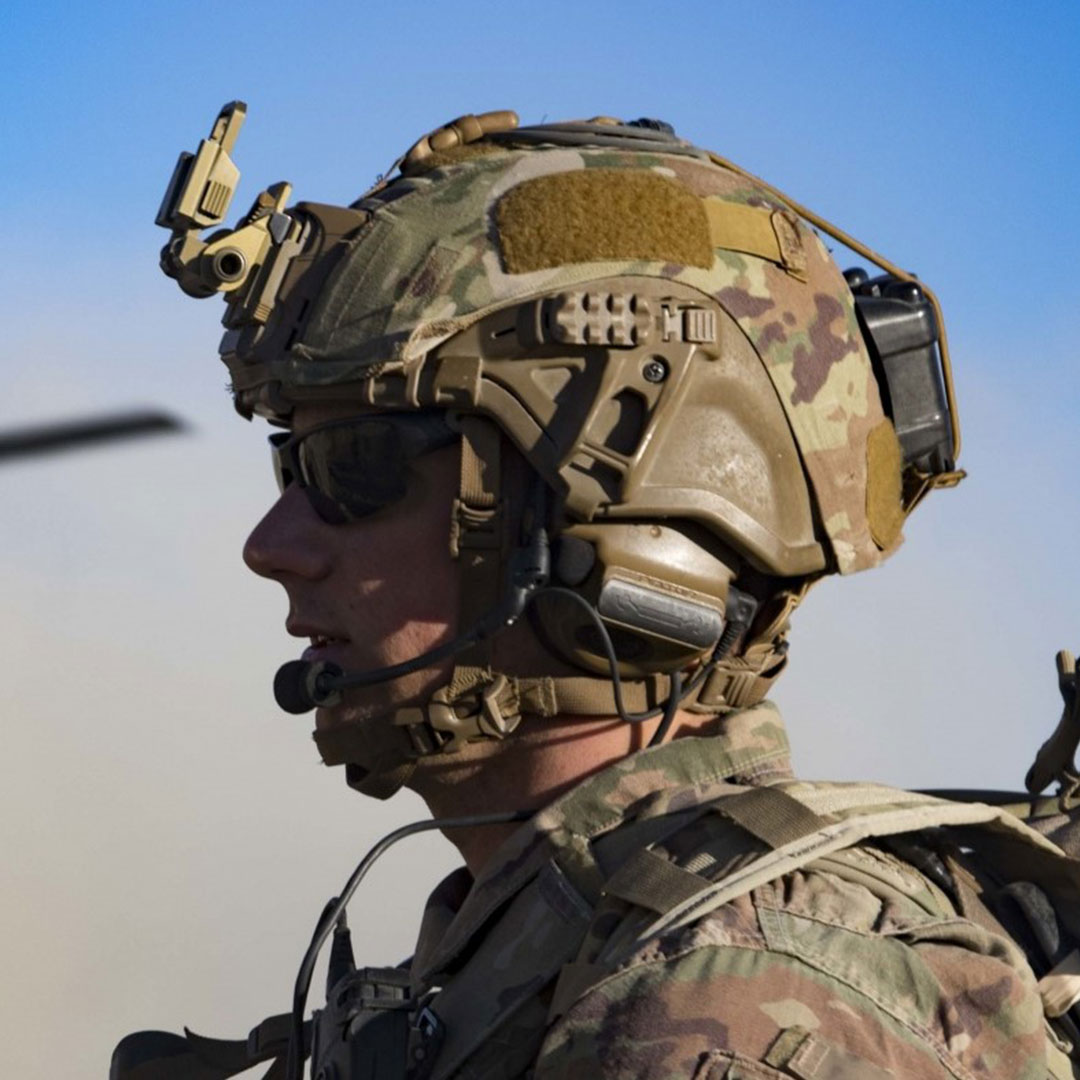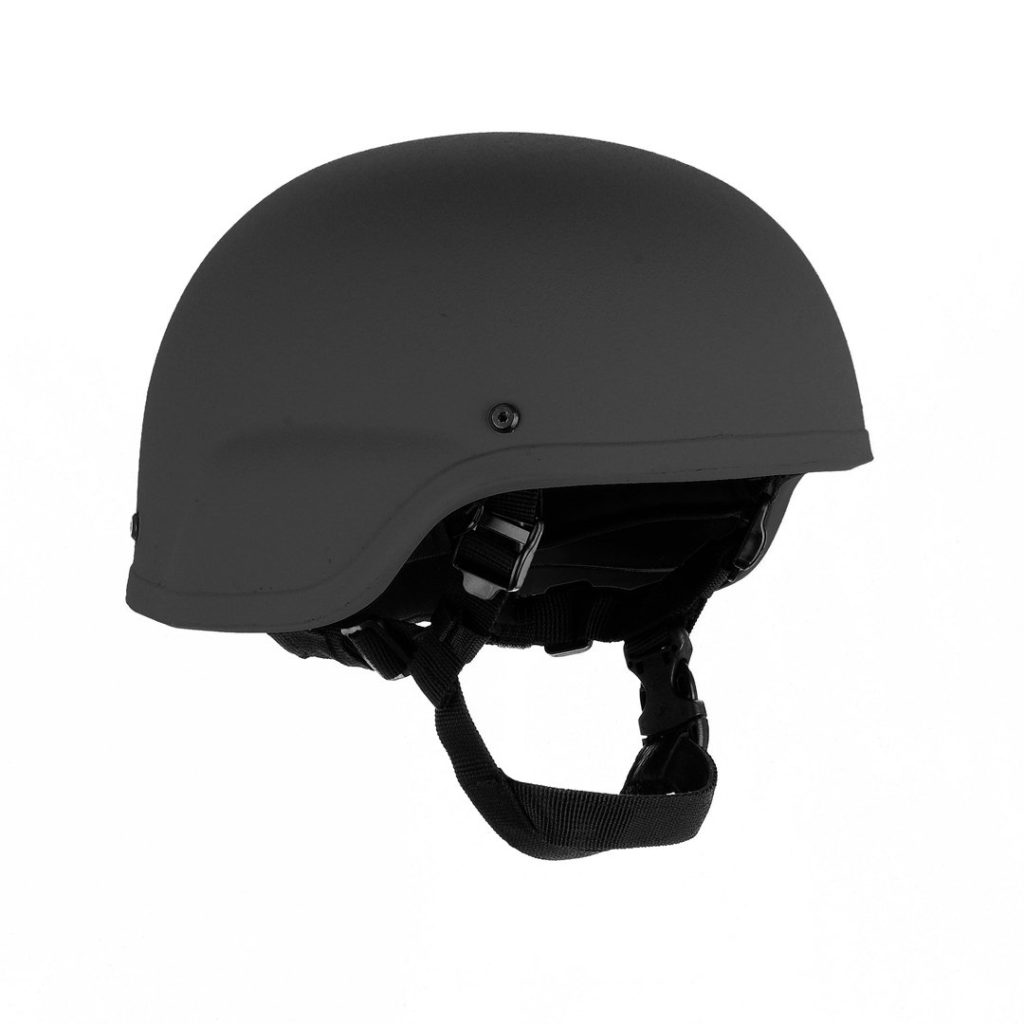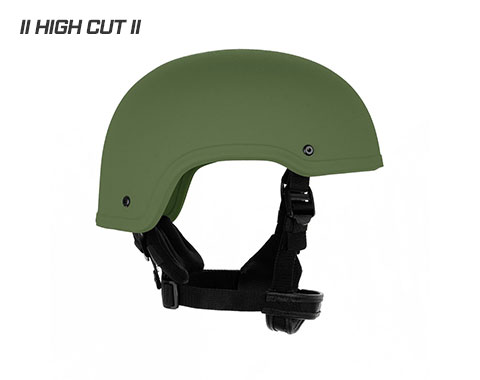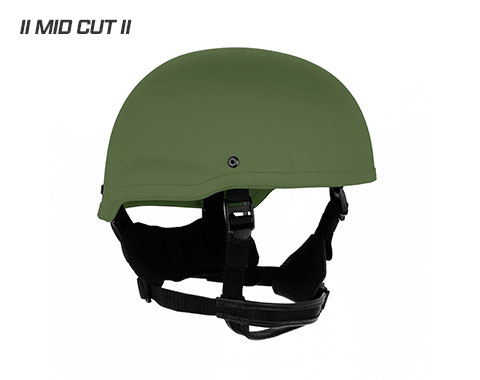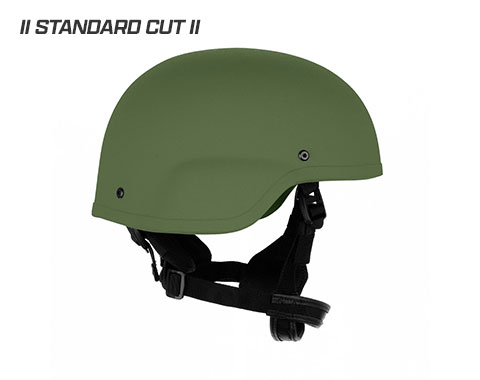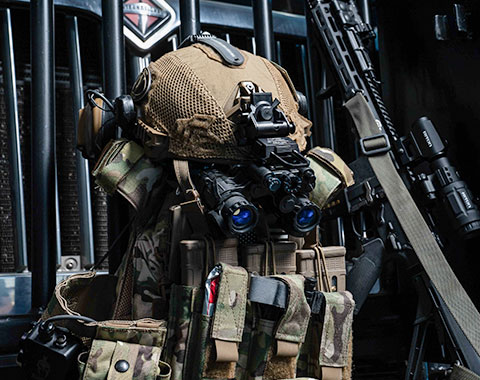MILITARY HELMETS
TACTICAL KNOWLEDGE BASE
Categories of Ballistic Helmets
Military helmets evolved throughout the 20th century. Each armed conflict provided an opportunity to test and revise the technologies protecting soldiers in the field.
Soldiers from the United Kingdom and other European countries started wearing metal military helmets made from Hadfield steel during World War I. Hadfield steel, or Manganese steel or Mangalloy, was invented by Sir Robert Hadfield in 1882. It is hard and wear-resistant, making it ideal for use as armor.
By the early 1940s, the US military started using helmets that were closely based on the Hadfield steel helmets worn in Europe. These helmets were called “M1 Helmets” and remained in use for over four decades.
A breakthrough in protective equipment came in the 1950s. DuPont invented aramid fiber, which is marketed as “Kevlar.” Most people are familiar with Kevlar and its ability to protect against bullets.
Kevlar is lightweight, strong, and not affected by rust or corrosion. It can also absorb shock. While Kevlar is tough, it may not stop a high-velocity rifle. Kevlar is often found in soft body armor or hard armor featuring metal plates or inserts.
The first military helmets to include Kevlar were released in the early 1980s. The Personnel Armor System for Ground Troops (PASGT) includes Kevlar helmets and vests that are still in use today.
Several new variations came out in the early 2000s. Options now include the Modular Integrated Communications Helmet (MICH), the Advanced Combat Helmet (ACH), and the Enhanced Combat Helmet (ECH).
Modular Integrated Communications Helmet
(MICH)
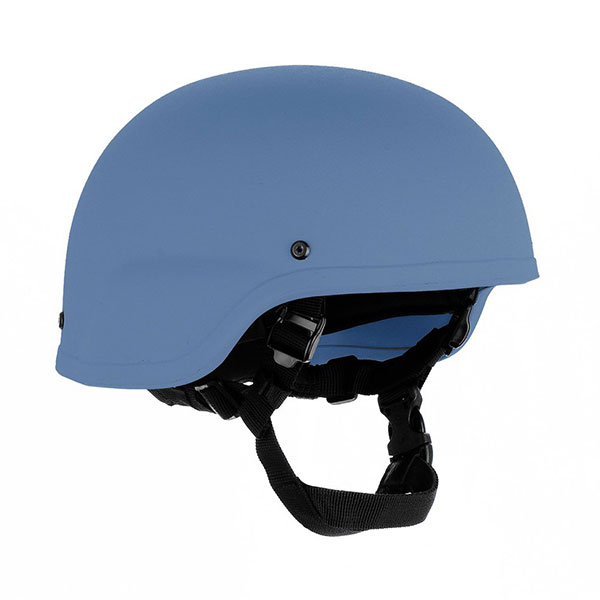
The MICH was originally part of a series of combat/military helmets designed for the U.S. Army Special Operations Command as a replacement for the PASGT helmet.
Advanced Combat Helmet
(ACH)
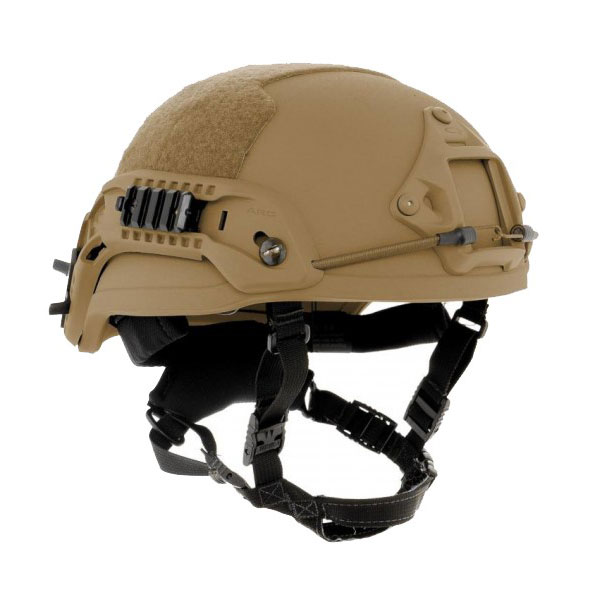
The Advanced Combat Helmet is derived from the MICH in terms of design, but offers superior protection
Enhanced Combat Helmet
(ECH)
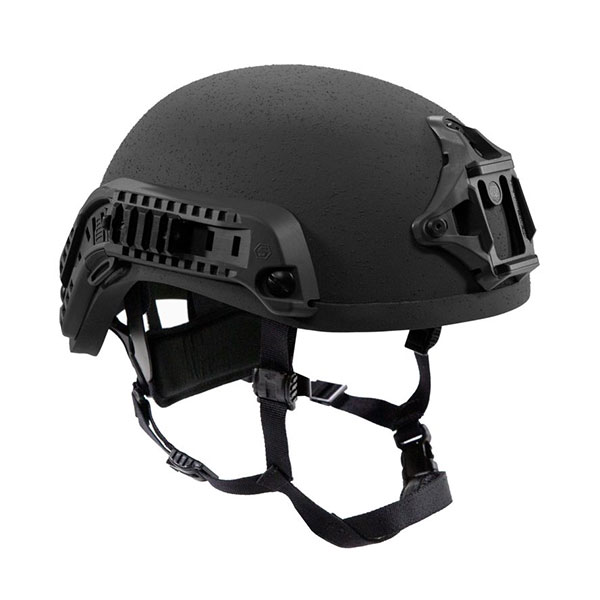
The Enhanced Combat Helmet is identical in shape to the Advanced Combat Helmet but thicker and made with lighter materials.
PASGT Helmets
Personnel Armor System for Ground Troops (PASGT) helmets were first released in the early 1980s but remain in use today. These helmets are often made with original Kevlar fibers.
Some people refer to these helmets as K-pots, Kevlar helmets, or journalist helmets.
The outer shell of the helmet often features 19 layers of Kevlar and is likely to provide Level IIIA protection against projectiles. The weight of the helmet may range from just over three pounds to a little over four pounds.
MICH/ACH Helmets
The Modular Integrated Communications Helmet (MICH) was released in 2002. The design eliminates the sweatband and chinstrap found on the PASGT helmets and adds a four-point retention system. You get increased comfort and protection from impacts.
The Advanced Combat Helmet (ACH) was released in 2003. It is an updated version of the MICH helmet. Both options typically include a more advanced type of Kevlar for increased protection against handguns.
MICH/ACH helmets often weigh less compared to PASGT military helmets of the same size. The average weight is between 3 and 3.6 pounds instead of 3.1 and 4.2 pounds.
Backstory:
MICH helmets were developed in part due to the preference of special forces operators for non-ballistic “Bump” helmets over heavy PASGT ballistic helmets. In addition to being lighter, more comfortable, closer-fitting, and made of plastic, bump helmets are easier to attach accessories to, such as night vision devices and communications headsets.
The lighter weight and non-ballistic nature of these helmets allowed the fitting of additional accessories without putting undue strain on the neck or requiring the drilling of holes through Kevlar to affix night vision mounting brackets, compromising the Kevlar helmet’s protective ability if not done precisely.
The unforgiving environment of close-quarters warfare inevitably led to injuries and deaths among Delta Force operators, especially during the 1993 Battle of Mogadishu when at least one operator (SFC Shughart or MSGT Gordon) was allegedly killed by a bullet to the head. Side note: In the 2001 film Black Hawk Down, Shughart was portrayed by actor Johnny Strong.
While no ballistic helmet at the time could protect operators from small arms fire in close-quarters combat; however, this incident inspired the U.S. Army to create a new helmet to better protect special operations forces in direct action missions while providing the weight and modularity they desired that caused them to cease using the PASGT in the first place.
Source: Wikipedia
Protection Level of a Military Helmet
- IIA - Handgun Prtection
- III - Rifle Protection
- IIIA - Rifle Protection
- IV - Rifle Protection
Hard body armor typically has at least Level III protection while soft body armor includes Levels IIIA and lower. Level IIIA ballistic helmets are often made with Kevlar fibers and feature resin shells. A Level IIIA helmet may protect against handguns but is unlikely to stop a rifle.
Level III military helmets often include the latest Kevlar materials for enhanced protection. The additional protection may help stop rifle ammunition, making Level III helmets a preferred choice for combat.
Chase Tactical helmets are available with Level IIIA and Level III protection. Level III helmets are often a little heavier but offer higher resistance to ballistics.
High Cut vs. Mid Cut vs. Standard Cut
Along with the protection level, you need to pay attention to the cut. High-cut helmets are cut higher around the ears. This provides more space for accommodating headsets. The higher cut also provides greater maneuverability and comfort but less protection.
A Mid-cut helmet shields the ears, which can make it difficult to wear certain types of headsets. The design also typically results in a slightly heavier helmet.
A standard cut offers a wider peripheral view compared to a Mid-cut helmet. You get better situational awareness and maneuverability.
A military helmet with a standard cut may also work better with a wider range of hearing devices compared to a Mid-cut version, making it one of the more versatile options.
Military Helmet Accessories and Design Options
Most ballistic helmets include a helmet pad and straps. The inside of the helmet has a padding system or retention system for comfort and safety.
You are also likely to find moisture-absorbing material inside the helmet, which helps reduce the risk of bacterial growth.
Available accessories include visors, rail systems, optics, ear covers, and more. However, the accessories and mounts are made for specific styles of military helmets.
For example, a specific visor or helmet liner may only fit an ACH-style helmet. When shopping for accessories, make sure that they fit your type of helmet.
Ballistic Helmets vs. Bump Helmets
Bump helmets are a type of helmet designed for protection against bumps instead of ballistics. In fact, bump helmets are not rated for protection against firearms. They are intended to shield the head against other threats in the field, such as falls or flying shrapnel.
Bump helmets are often more affordable compared to ballistic helmets. They are also lightweight. The typical bump helmet only weighs about 1.5 pounds, which is about half of the weight of a PASGT or ACH helmet.
Yet if you are going into combat or expect to encounter armed individuals, you will likely want the extra protection offered by a ballistic helmet.
How to Choose the Best Helmet
The first step in choosing a military helmet is to consider the environment where you intend to wear it. If you are a civilian, you are likely limited to bump helmets and some PASGT helmets. ACH helmets are typically restricted to military personnel and law enforcement agencies.
If you need a helmet for combat, you will likely choose between a PASGT helmet and an ACH helmet. Both options offer moderate protection against ballistics, including handguns and low-caliber rifles.
PASGT helmets may cost less and are more likely to offer Level IIIA protection instead of the Level III protection provided by most ACH helmets. ACH helmets also tend to work better with communications gear due to the flatter design around the brow.
You should also decide whether you need a high-cut, low-cut, or standard-cut design. High-cut military helmets work better with headsets and hearing protection devices but provide less ballistic coverage. If you want the most protection, choose a low-cut helmet. For the greatest balance between protection and versatility, go with a standard-cut helmet.
No matter what type of military helmet you choose to get, you can trust the options available from Chase Tactical. We have an assortment of PASGT and ACH helmets available in a range of colors and sizes to suit any application. Browse for the best military helmet today.
U.S. Military Helmet Launch Timeline
Personnel Armor System for Ground Troops (PASGT) Helmet
First used by United States Military
First issued in 1983 to replace the M1 helmet. Former Kevlar helmet used by the United States Army, Marine Corps, Navy. Used by the USAF but is being phased out by the ACH US Air Force.
First used by Special Operations – United States Army
The MICH-2000 was developed for special operations use and became the basis for the Advanced Combat Helmet. The MICH-2001 is the ``High cut`` version of the MICH-2000. It removes all ear protection enabling headgear to be worn. The MICH-2002 introduces the ``Gunfighter cut``, which raises the area around the ears by about 1/2 in, allowing for a wider range of headsets to be used.

